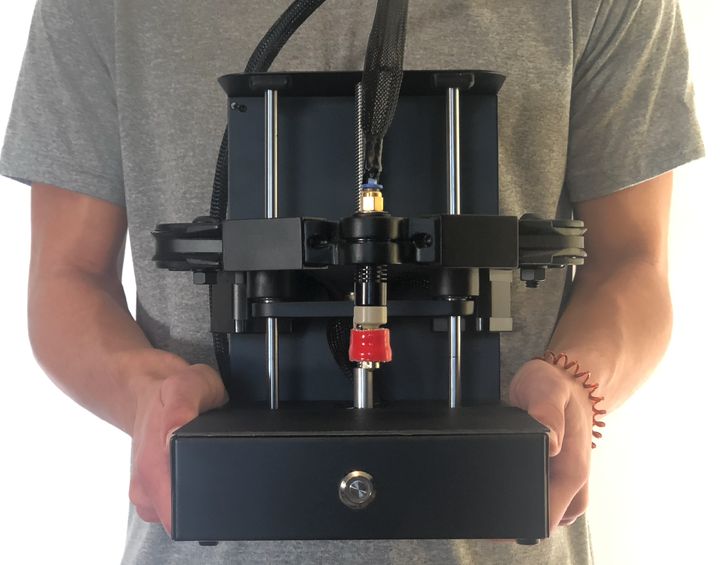Earlier this week we reported on what appears to be yet another Kickstarter 3D printer project failure.

The Plybot project has been silent for months and its backers are angry, seeking refunds that may never come.
This is a scenario that should never have happened, and I have some thoughts about this situation that have been bothering me.
The Plybot project probably should never have been launched on Kickstarter for a number of reasons, but mainly because the technology has matured so much over the past several years that it is no longer possible to succeed using crowdfunding.
It’s been a running joke that 3D printer Kickstarters are failures about to happen, and that’s mostly true. Eager machine designers are able to build prototypes, but often fail when faced with the far more complex problems of scaling, mass production, components sourcing, shipping and more.
Nevertheless, in the early days several 3D printer Kickstarter campaigns did succeed, and there are two reasons why.
One is that these projects had sufficient expertise in manufacturing to transform from prototype to product, not an easy thing to do.
The second reason is that the field was relatively open. Few people had 3D printers at that time, and there were few competitors. The machines of that era were generally poor performing, unreliable and costly. It was easy to compete with a slight advantage in one of those areas and succeed. Many companies did so.
Today it’s a vastly different space.
The DIY desktop 3D printer market might be close to saturation. There are countless inexpensive overseas competitors offering increasingly good equipment. The level of quality expectation is high and rising. The expectation of reliability increases.
Most importantly, it’s increasingly difficult for a 3D printer designer and manufacturer to “beat” the competition in any significant way. In the old days you could, for example, implement a metal frame that would be notably more rigid than a competing machine made of wood. These days most inexpensive 3D printers are actually pretty good, and making improvements is much harder. The easy changes have mostly been done.
Equipment manufacturers would have to spend a great deal of effort to make a machine only slightly better, and nowadays that improvement might not even be noticeable by purchasers.
This all suggests that someone appearing in a Kickstarter today with standard 3D printing equipment can’t effectively compete with the existing machines on the market. Even worse, the competition is continuing to get better every day with their enormous resources. A small startup doesn’t really have a chance anymore.
I see only two ways a startup could succeed in this space.
First, they might somehow break the cost barrier and offer a machine at significantly lower prices than other machines. That’s getting harder to do, as prices continue to drop at the low end. I’m not sure how this could be done, as the big players already source the lowest cost components.
The second approach is to come at the problem of 3D printing in an approach that is entirely different from FFF, resin and other current 3D printing processes. That process would have to do some combination of the following:
- Produce prints with extreme quality
- Produce prints extremely fast, at least 10X faster
- Print parts in multiple unusual materials not normally available
The problem is that most — and possibly all — of the really inexpensive ways to achieve 3D printing have been done. There are a few new 3D printing processes and approaches emerging, but they are all highly complex and require massive amounts of funding to pursue. An example of this is volumetric 3D printing, which actually hits two of the above points.
When you look at the 3D print space in this way it’s pretty clear that you shouldn’t bother attempting a 3D printer Kickstarter unless you have something that’s absolutely, utterly different and much, much better.
You can’t just match existing products, because as a startup and Kickstarter, there are added risks that must be compensated. If a buyer is taking a risk with a new company, they’d better get extra-big benefits when buying the product.
In the case of Plybot, the machine would produce prints of similar quality and speed to other equipment, so no advantage there. The only benefit for it was supposed to be low cost, but that was lost when scale-up was attempted.
My advice to those considering a 3D printer Kickstarter: you’d better make sure your product is truly and significantly different than anything on the market today or anything that is likely to appear in the next two years while you manufacture the machine at scale.

I’m not completely agree. The printer itself was interesting for the SCARA kinematics that made It enough unique. I would have been willing to buy It also for 500 USD retail Just to have a SCARA 3d printer (Morgan 3d printer Is a too expansive option and there are few SCARA kits really flemsy and unreliable). The problem of this kikstarter was the authrs were supposed to know how to run a start-up and some had some reliable pedigree on 3d printers. And they didn’t. Moreover they lied, and lied and again lied. It would have been better they offered the printer for a higher price since the beginning and made their homework to make a suitable campaign to succed only if they had enough funds to actually make the product. Also raising the shipping price in Advance was a shitty moove.